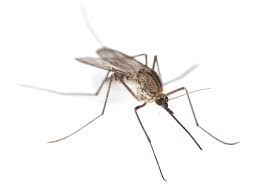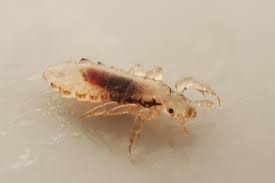VECTOR CONTROL SERVICES IN KENYA.
GM vector control services in Nairobi, Kenya. In order to achieve the best possible vector control with maximum safety and minimum costs, operators need to know both the biology of the vector species and the various control methods, techniques and procedures. Pesticides have made a lot of progress in the development and use of pesticides. However, it is a mistake to think that procedures based only on these materials are the main techniques used in the operational programmes.
In any control programme, environmental improvement may be the best way to control and should be the first priority. However, while pesticides are secondary, optimal control usually cannot be achieved without pesticides, either as an additional treatment or in emergency situations. This is true for insect or rodent control, but not for disease control. In some areas, disease control has been achieved with pesticides alone. A classic example is the control of malaria. This was achieved by applying insecticide measures against the part of the vector population that entered dwellings.
When using different control measures, it’s important to understand the limitations of each application. While there’s a lot of emphasis on tried and tested methods, some control measures can be associated with specific geographical areas with specific climatic conditions affecting the physiology and behaviour of a specific strain of vector.
Therefore, measures that are effective in one country may not be as effective in another. Of course, vector control can’t just be based on routine or mechanical use of tried and tested methods. It’s essential to know as much as possible about vectors’ biology and ecology in general and particularly about the vectors in the areas where control measures will be applied. The most vulnerable time in a vector’s life cycle should be identified and population increases under known conditions should be correctly forecasted. This approach gives a good foundation for planning an effective and cost-effective programme. This chapter provides general information about the various groups of insect vectors as well as detailed information about some vectors of disease of particular importance in international health.
Mosquitoes Control services in Kenya
Mosquitoes are the single most important group of insects in terms of public health in Kenya. Mosquitoes are one of the most adaptable and cosmopolitan insects in the world, with over 3,000 species distributed worldwide. Mosquitoes can survive in almost any place where there is water for their larvae to grow. Mosquitoes have been a constant threat to human progress throughout human history, causing great suffering due to their blood-feeding habits and their capacity to host and transmit disease-carrying organisms. Mosquitoes carry malaria, yellow fever and dengue fever, as well as filariasis and most of the viral types of arthropods that transmit encephalitis. They continue to thrive wherever there are human populations, and are particularly well-adapted to harbouring and transmitting agents of disease. Fortunately, only a few species are known as natural vectors of disease and many species are associated with them.
 Control of Mosquitoes
Control of Mosquitoes
Aedes Aegypti Aedes Albatipictus Aedes Simpsoni Aedes Mosquito Floodwater species Aedes Aedes Floodwater Aedes Psorophora These mosquitos are capable of flying or migrating as adults for large distances After identifying breeding areas through larval surveys Control measures include: Eliminating breeding areas or modifying them with environmental improvement measures Applying selected chemicals (mainly larvicides) when an inspection indicates that they are necessary Applying adulticides in addition to larvicide treatments when emergency control of invading adult mosquitos are indicated For this group of mosquito Prehatch larvicidal treatment Applied 1 to 8 weeks prior to the eggs being flooded (usually late spring/early winter) Floodwaters species Floodwaters breeding sites Woodland pools Salt marshes Irrigated pastures Cultivated land
Fleas Control services in kenya
Siphonaptera is a family of insects that are wingless and belong to the order Aphaniptera. The order is divided into two subfamilies: Pulicoidea (Fleas with wings) and Ceratophyllida (Fleas without wings). There are 17 families in Aphaniptera and about 500 known species. Fleas are laterally compressed and heavily sclerotized. They feed on warm-blooded animals and are blood-sucking. Their bodies have many backward projecting spines and hair. Their legs have strong grasping claws that allow them to move quickly between their host’s hairs or feathers. Their legs are well-developed and the third pair of legs are strongly modified for jumping. The third thoracic section provides the muscle and structural strength for jumping.

Control of Fleas.
Flea control over the long term is best achieved through basic sanitation methods that reduce or eliminate hosts by removing habitats and food sources. Chemical control should be considered an emergency measure for controlling or preventing epidemic disease, a means of temporarily relieving a pest problem or a preliminary stage for rodent control. In some cases, chemical treatments might be the only way to prevent human plague exposure. Developing physiological resistance to insecticides by insect populations exposed to constant treatment should be a cautionary tale that chemical control is not a sufficient long-term replacement for good hygiene practices. Resistance to insecticides is defined as the ability of a strain of an insect to tolerate doses of a toxicant that would be fatal to most insects in an ordinary population of the 4 same species. Until recently, DDT was the most widely used insecticide in the control of X. cheopis, xsildenafil, xrincol, and xrincolus rodent fleas due to its availability, low cost, and effectiveness.
Lice Control Services in Kenya.
General Lice are one of the most common types of louse found in humans. They have been observed in humans since ancient times and are most commonly found in crowded places with poor personal hygiene. They are also common in times of stress such as war or natural disasters when there are no facilities for personal hygiene. Not only are they very annoying and bothersome pests, but they also carry two human diseases which sometimes occur as severe epidemics. There are two types of louse that are commonly found in humans: the crab louse (also known as the Pubic Louse) or the Human Louse (also called the Pediculus Louse) with its subspecies Pediculus Humanus and the Human Louse Capitis. The two subspecies differ mainly in the way they live, with the head Louse living in the hair on the head and the body Louse living mainly on the undergarments close to the skin. Both of these types of louse can be successfully interbred. The crab louse, on the other hand, belongs to a different genus, Pediculus, and is very different in appearance and habit.

Control of Lice.
The problem of controlling body lice on a small number of infested people is not the same as the public health problem that arises from a general louse infestation among refugees in the chaos of war or a major disaster. In the latter cases, it is necessary to reduce lousiness quickly because of the threat of louse-borne disease and the measures taken must offer some protection against reinfestation. Under normal circumstances, the risk of disease is very low and reinfestation is much less serious. Different treatment methods may be used and the methods should be widely acceptable to ensure cooperation of the infested people. Treatment of body lice is usually directed against the clothing of the people who are infested, but in some cases bedding may also need treatment. In any case, the hair, head cover, and any extra clothing of the person who is infested must be treated. If clothing cannot be removed, then dust containing 10% dioxin resistant lice is the treatment of choice.
https://www.facebook.com/expestltd

